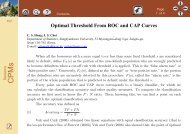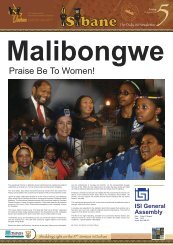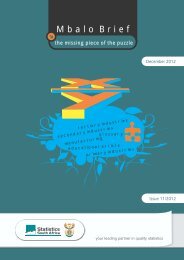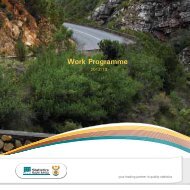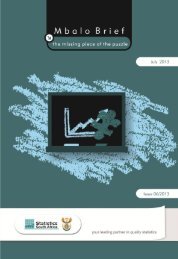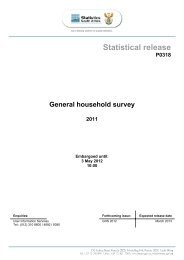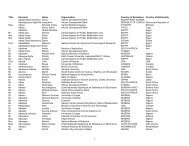Post-enumeration Survey (PES) - Statistics South Africa
Post-enumeration Survey (PES) - Statistics South Africa
Post-enumeration Survey (PES) - Statistics South Africa
Create successful ePaper yourself
Turn your PDF publications into a flip-book with our unique Google optimized e-Paper software.
<strong>Statistics</strong> <strong>South</strong> <strong>Africa</strong><br />
19<br />
Recruitment and training of field staff<br />
The recruitment strategy for the <strong>PES</strong> stated that there would be over-recruitment by 20% in each<br />
province in order to increase the pool of candidates to choose from at the completion of training. This<br />
was not always possible to achieve since the field staff database was exhausted in most provinces by<br />
the time <strong>PES</strong> started recruiting. In some instances, people were headhunted from the areas in which the<br />
<strong>PES</strong> was conducted, but this was not always successful. Some trainees also dropped out of training,<br />
which also reduced the number of candidates to choose from. Human Resource Management (HRM)<br />
processes also had a negative impact on progress in instances whereby field staff had to be replaced.<br />
Numerous follow-ups had to be made regarding the signing of documents for the appointment of staff.<br />
The secondment of permanent staff also proved to be a challenge in instances where some of them<br />
refused to work over weekends (which was a requirement for census and <strong>PES</strong> fieldwork due to<br />
timeframes), or they undermined the authority of contract staff who were in higher positions. This had a<br />
negative impact on staff morale because it meant that one person had to do the work of two people over<br />
the weekends.<br />
Publicity and listing<br />
Publicity and listing was initially planned for 07 to 22 November 2011, but due to the large presence of<br />
census field staff in the field and a decision by senior management, the start date for publicity and listing<br />
was moved to 14 November 2011. This meant that the period for this exercise was shortened to at least<br />
a week, leaving very little time for the team to conduct comprehensive quality assurance on listings. This<br />
resulted in the team having to do numerous updates on the EA Summary Books during <strong>enumeration</strong> for<br />
the structures that had been missed during listing. Despite the postponement of <strong>PES</strong> publicity and listing,<br />
census field staff was still present in some EAs that were in the <strong>PES</strong> sample, which compromised the<br />
independence of the <strong>PES</strong>.<br />
Pamphlets and posters were only available in English, which meant that Fieldworkers had to spend a lot<br />
of time explaining the messages in these posters and pamphlets in the language of the respondent. The<br />
quality of the posters was also poor (posters were easily ruined by wind and rain, and had a small font<br />
size). The fact that the census had not communicated to the public about the <strong>PES</strong> (despite the fact that<br />
the <strong>PES</strong> had requested census to include messages on <strong>PES</strong> in census publicity material) also meant<br />
that Fieldworkers had to spend a lot of time explaining the purpose of their visit to respondents, which<br />
resulted in refusals in some cases.<br />
<strong>Post</strong> Enumeration <strong>Survey</strong> (<strong>PES</strong>)



